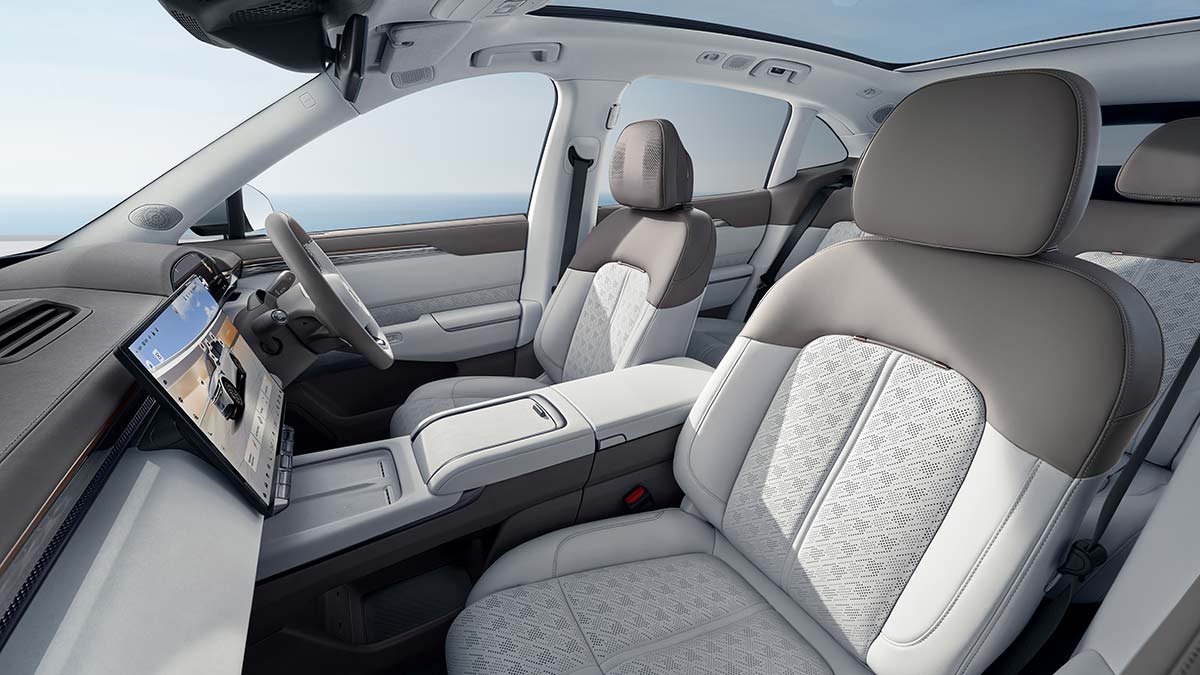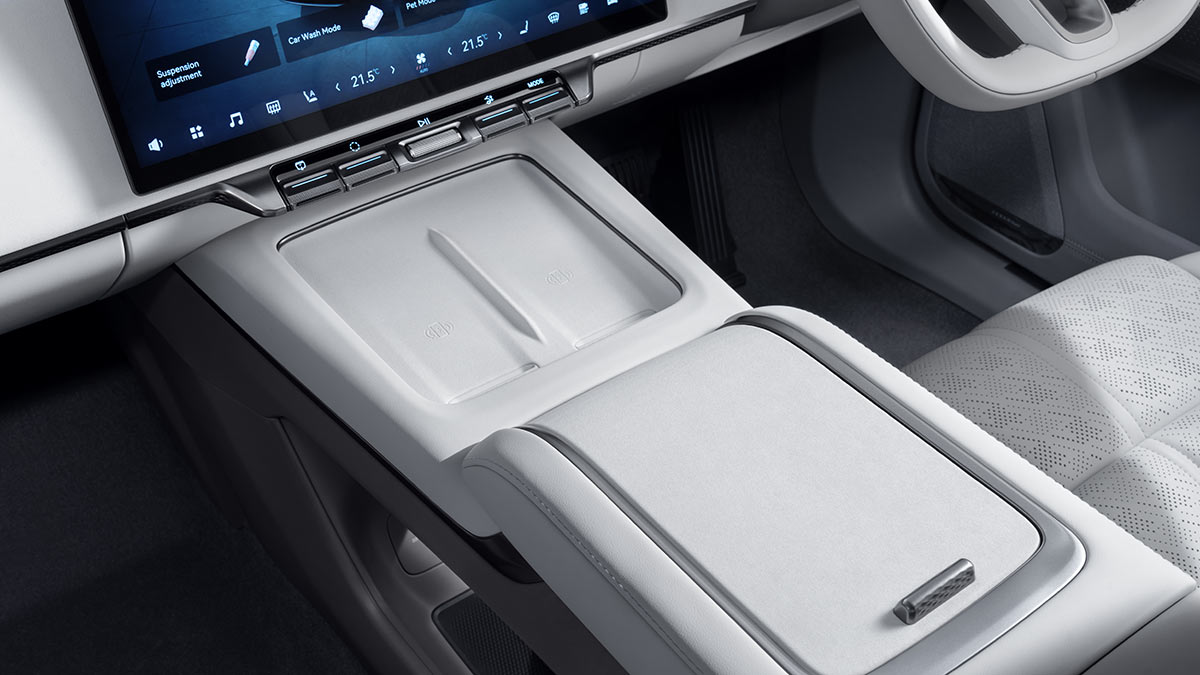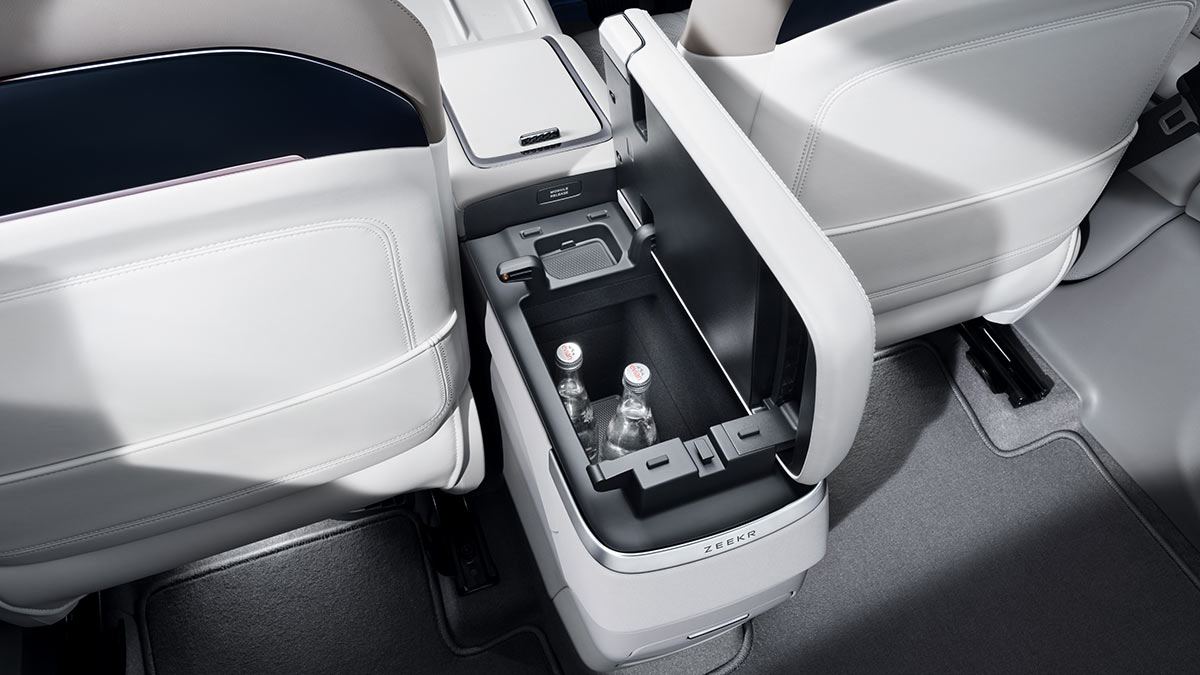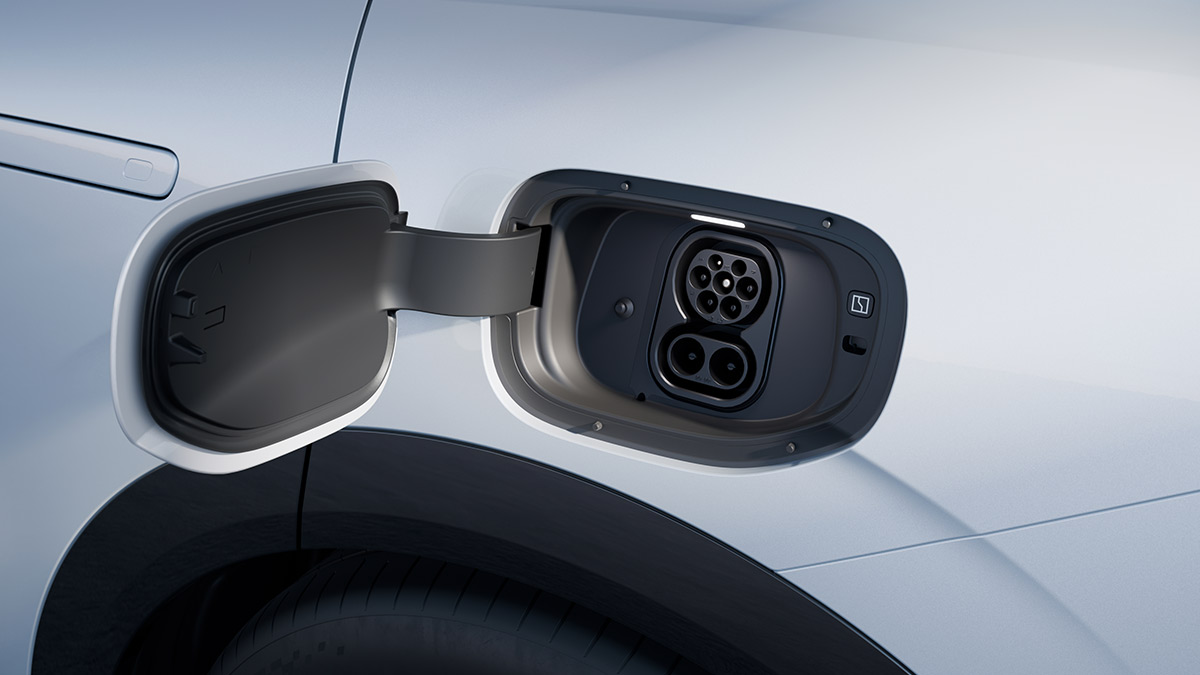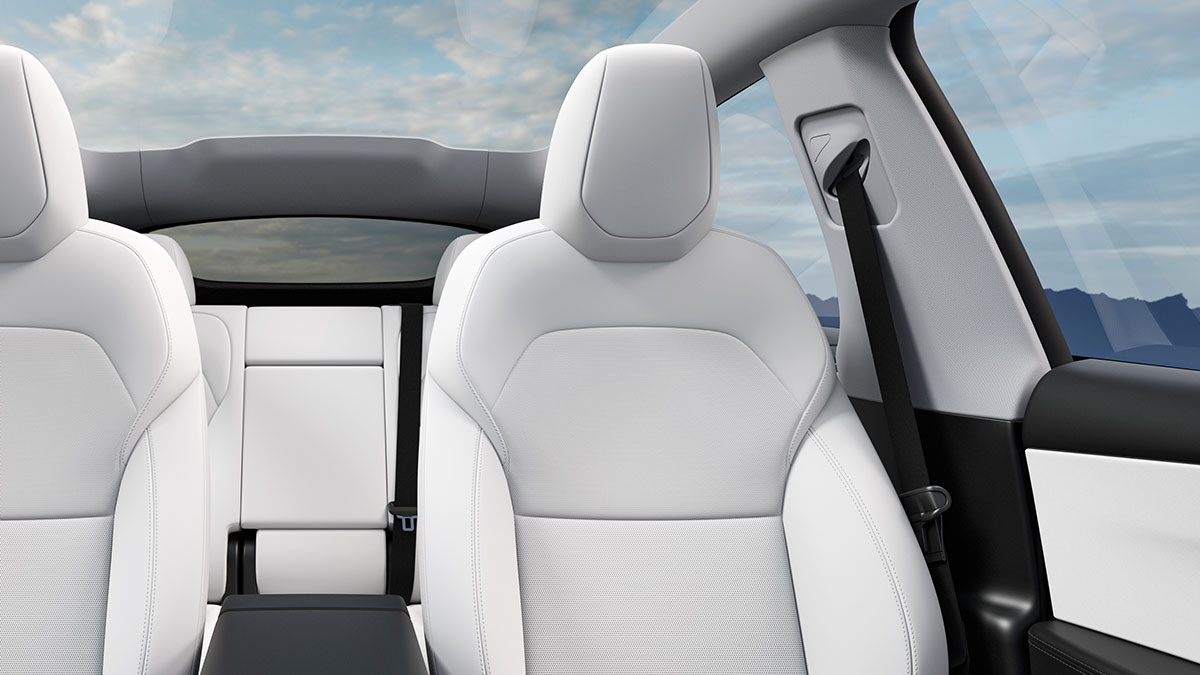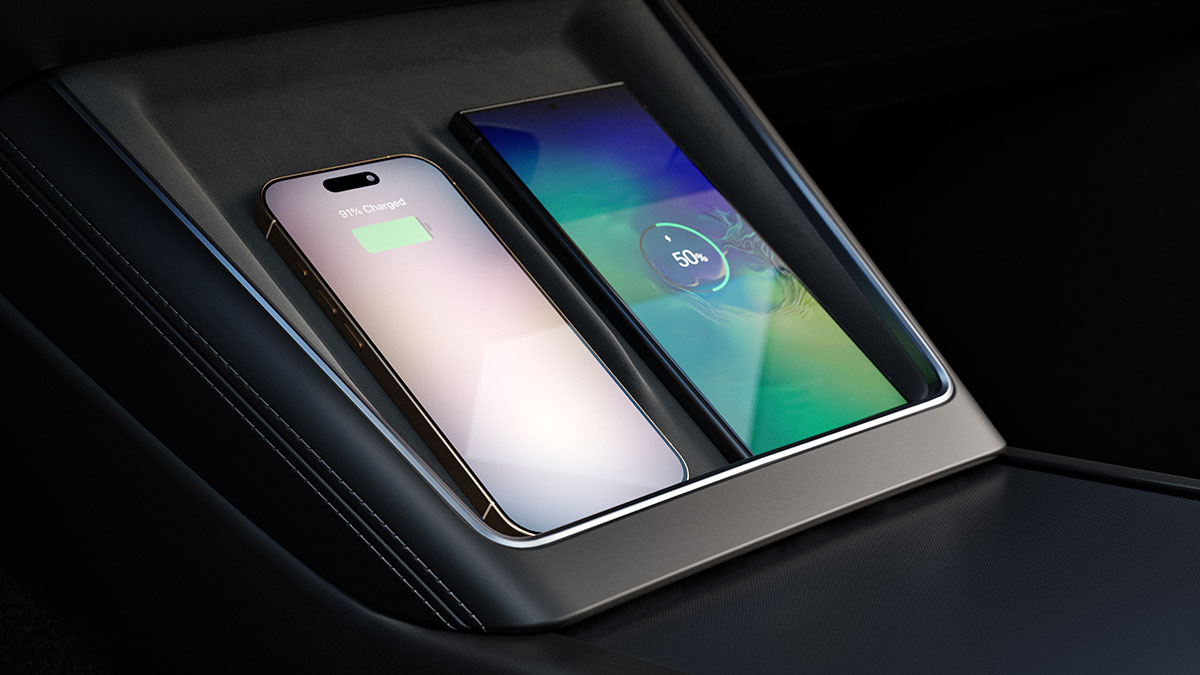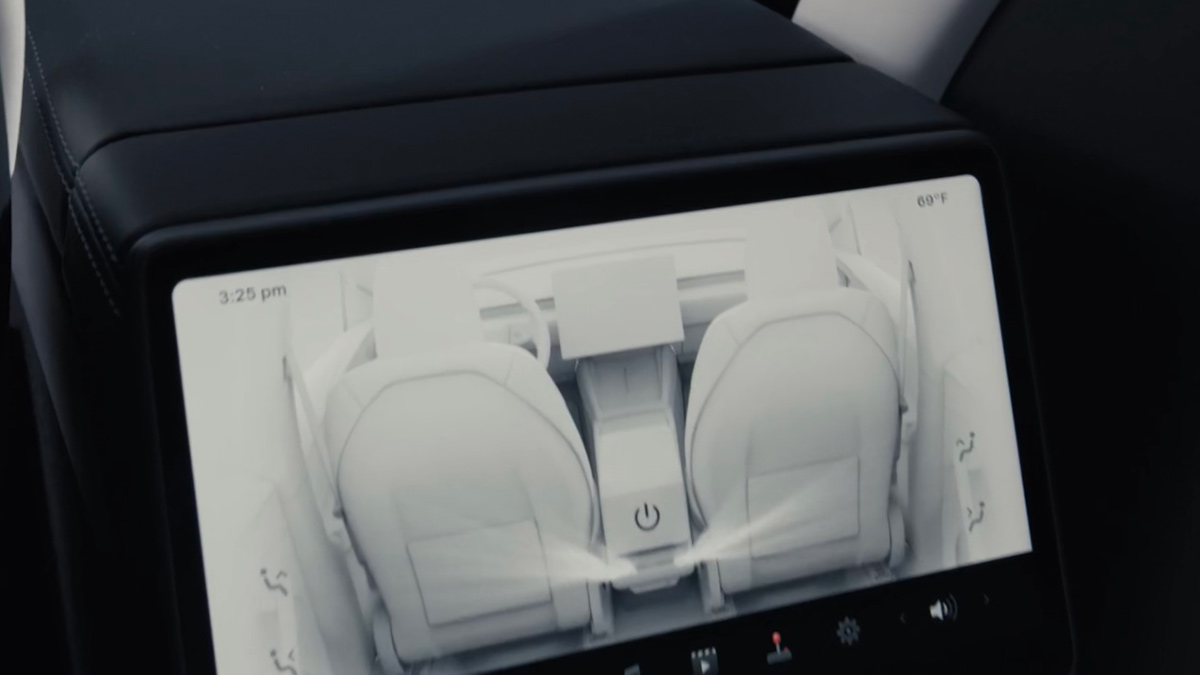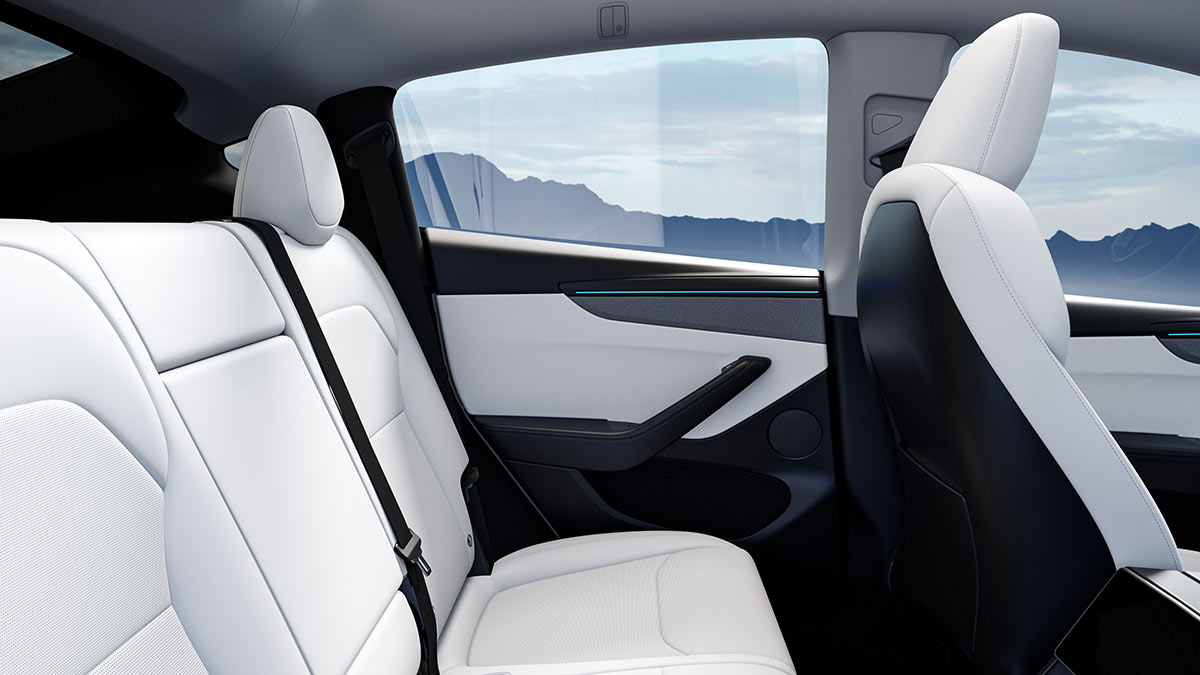The Tesla Model Y has a sleek new look, more power and added tech as part of a major update to freshen up the best-selling electric vehicle in Australia. From pricing to specs, here’s what you need to know about the new 2025 Tesla Model Y medium SUV.
2025 Zeekr 7X vs Tesla Model Y specs comparison
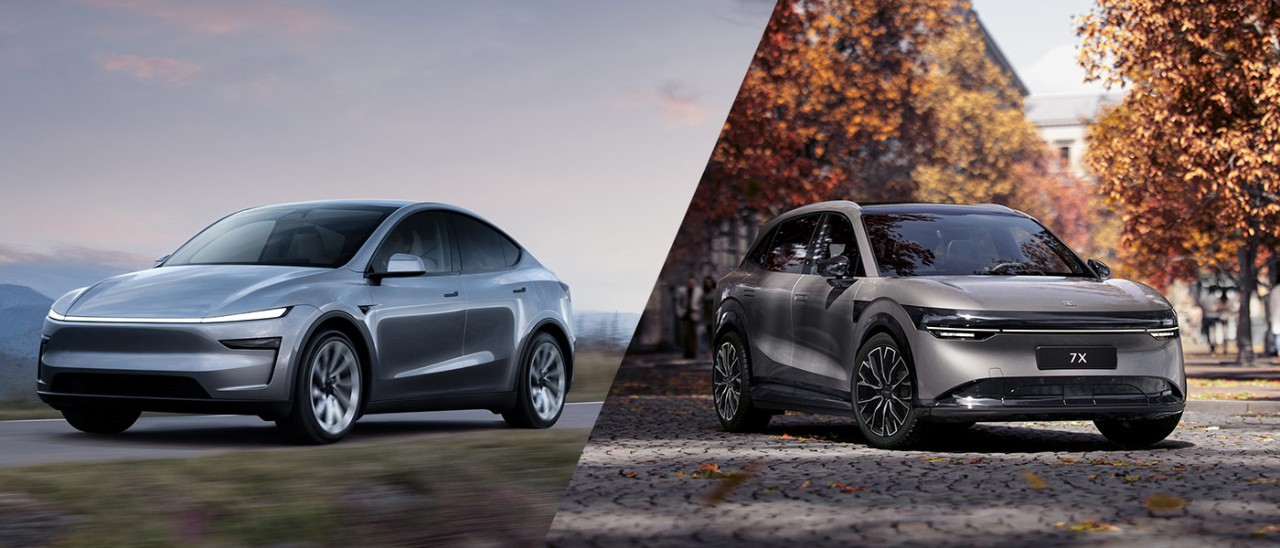
New rivals for the Tesla Model Y are coming in thick and fast, but perhaps the most promising to date is the Zeekr 7X. Can this premium electric medium SUV upset Australia’s top-selling EV?
Perhaps the biggest threat yet to the Tesla Model Y is coming soon to Australia in the form of the 2025 Zeekr 7X.
Lining up against more than 20 other battery-electric five-seater medium SUVs, the Zeekr 7X is so closely modelled on the top-selling Model Y – and carries some important advantages in terms of pricing and specification – that it’s attracting strong attention in the marketplace and could be the EV that knocks Tesla off its throne.
Zeekr might well be an unknown brand but it’s another premium up-and-coming entrant from the giant Geely Auto Group with close connections to Volvo and Polestar and engineering and design centres in Sweden and China.
Can it overtake the biggest-selling EV in Australia and the world and one of the best family SUVs going around? Let’s find out with this in-depth comparison bench test ahead of the first local Zeekr 7X customer deliveries due in October.
More: Search and compare new and used electric cars on sale today in Australia
In this article
- How much do the Zeekr 7X and Tesla Model Y cost?
- What is the warranty for the Zeekr 7X and Tesla Model Y?
- What is the range and performance of the Zeekr 7X and Tesla Model Y?
- How big is the Zeekr 7X compared to the Tesla Model Y?
- What technology features on the Zeekr 7X and Tesla Model Y?
- How safe are the Zeekr 7X and Tesla Model Y?
- Should I buy a Zeekr 7X or Tesla Model Y?
How much do the Zeekr 7X and Tesla Model Y cost?
Now available to order, the 2025 Zeekr 7X fires its first salvo at the Tesla Model Y with pricing that oh-so-slightly undercuts the American brand’s top-selling – and also Chinese-built – battery-electric mid-size SUV.
The Zeekr 7X RWD (rear-wheel drive) is priced from $57,900 before on-road costs and options are added, compared to the Tesla Model Y RWD at $58,900. Translate this to driveaway prices for Victorian private buyers and the difference is even closer – less than $400 – at $63,977 for the 7X RWD and $64,373 for the Model Y RWD.
Direct comparisons are trickier with the long-range variants as the Zeekr 7X Long Range RWD is a single-motor/rear-drive variant compared to the higher-performing dual-motor/all-wheel-drive Model Y Long Range AWD. But pricing and the overall value equation are enticing with the 7X Long Range starting from $63,900 plus ORCs ($70,229 driveaway) compared to the Model Y LR at $68,900 ($74,793 driveaway).
Tesla is still readying an upgraded Model Y Performance flagship for this current series, leaving the Zeekr 7X Performance AWD out on its own at $72,900 plus ORCs ($79,607 driveaway). Massive price cuts wrought on the previous Model Y in 2024 took prices for the Performance down as low as $82,900 (-$8500), so the $10K advantage up front with the 7X hero model is persuasive. Watch this space as the new 2026 Model Y Performance draws near.
Zeekr’s pricing advantage widens when we crunch the numbers a little harder. As part of a launch special that runs until at least September 30, 2025, Zeekr is offering premium paint as a no-cost option whereas Tesla slaps up to $2600 onto the invoice for certain colours. The Zeekr 7X exterior palette includes standard Onyx Black and free-for-now Forest Green, Tech Grey, Crystal White and, on Long Range and Performance models, Brook Blue with a silver roof.
The Model Y has Pearl White as standard but asks $1500 for Diamond Black and Glacier Blue, $1900 for Stealth Grey and $2600 for Quicksilver and Ultra Red. You can spend another $1500 for a two-tone (black-and-white) interior trim package, while Zeekr is also throwing in its own twin-colour cabin themes for 7X as no-cost options until September 30 – black-and-grey (Long Range and Performance) and purple-and-white (Performance only).
What’s more, Tesla doesn’t include charging cables as standard with its EVs. A mobile connecter costs $550 and a Type 2 charging cable is $310, both of which are included gratis on the 7X – at least until the current launch offer ends.
Routine maintenance costs are still to be nailed down, but the Zeekr 7X will run to a schedule that requires the car to be serviced every 12 months or 20,000km, whichever comes first. Tesla does not publish set service intervals, instead recommending maintenance based on usage and providing notifications to replace specific components like the cabin air filter (every two years) and brake fluid (every four years).
More: Car servicing costs and differences: EV vs petrol vs diesel
What is the warranty for the Zeekr 7X and Tesla Model Y?
The 2025 Zeekr 7X has a five-year/unlimited-kilometre factory warranty for the vehicle, which is far superior to the four-year/80,000km warranty offered with the Tesla Model Y.
The high-voltage batteries used in the 7X are subject to a separate eight-year/160,000km warranty, which is commonly found in the car industry – including with the Model Y RWD. That said, Tesla does extend the distance limit for the Long Range AWD model’s battery warranty to 192,000km.
In both cases, Tesla guarantees a minimum 70 per cent retention of battery capacity over the warranty period. Zeekr hasn’t yet confirmed a retention rate for its 7X power packs in Australia, however European battery performance and durability specs show a 10 per cent capacity fade after 500 charge cycles.
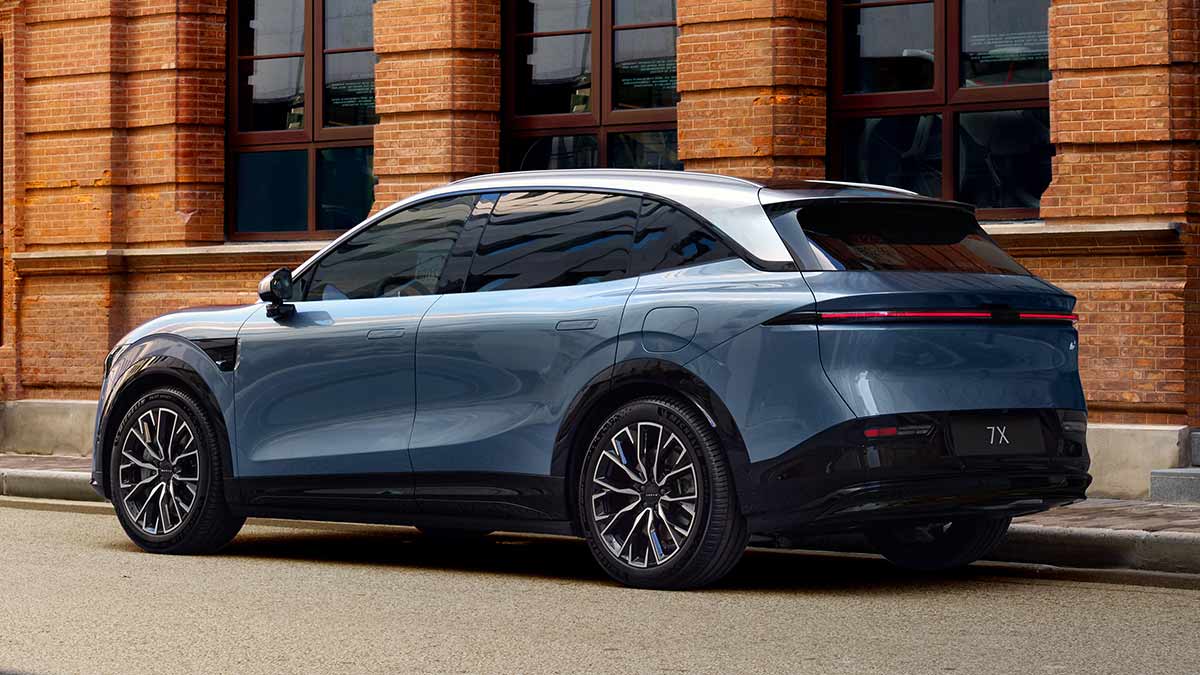
The Zeekr 7X is available in a Brook Blue exterior colour matched with a silver roof.
What is the range and performance of the Zeekr 7X and Tesla Model Y?
The 2025 Zeekr 7X RWD and Long Range RWD are both fitted with a single electric motor producing 310kW of power and 440Nm of torque. Claimed acceleration from 0-100km/h is 6.0 seconds, while Zeekr is claiming a “WLTP target range” of 480km for the RWD and 615km for the Long Range RWD. (Real-world range is typically lower.)
The 7X RWD uses a 75kWh lithium iron phosphate (LFP) battery while the Long Range model achieves its extra running distance with a 100kWh nickel manganese cobalt (NMC) battery. Both models are heavy, tipping the scales at 2320kg (RWD) and 2340kg tare (Long Range RWD).
The dual-motor Zeekr 7X Performance AWD produces 475kW/710Nm, weighs in at a hefty 2460kg, can nonetheless reach 100km/h from rest in 3.8sec, and has a claimed 543km WLTP target range from the 100kWh NMC power pack.
Tesla doesn’t quote e-motor output figures but multiple sources cite 255kW/450Nm for the Model Y RWD. Much lighter than the 7X RWD at 1921kg, the entry-level Model Y can accelerate from 0-100km/h in 5.9sec, according to the carmaker, giving it a slight edge over Zeekr. The Model Y Long Range AWD, which has dual electric motors that reportedly produce about 330kW/560Nm combined, is claimed by Tesla as reaching 100km/h from standstill in 4.8sec. It also remains under two tonnes (1992kg).
The official WLTP driving range for the Model Y RWD is 466km – 14km shy of the 7X RWD – while the Model Y Long Range AWD can reach 600km, 15km less than the single-motor 7X Long Range RWD. Again, Tesla doesn’t quote battery specifications, but the standard model is believed to use an LFP battery of about 60kWh capacity while the long-range version switches to NMC chemistry with a capacity of around 75kWh.
With the Zeekr 7X underpinned by an 800-volt electrical architecture, the RWD model’s 75kWh LFP battery can handle DC ultra-rapid charging up to 450kW (not available in Australia) and is said to need only 13 minutes to charge from 10 to 80 per cent at a 360kW rate, which is closer to our local conditions. (Most public charging stations max out at 350kW.) The Long Range RWD and Performance AWD duo’s 100kW NMC battery can manage 420kW and is claimed to need only 16min for a 10-80% charge at 360kW.
The Tesla Model Y has a lower 400V architecture and can handle DC fast-charging up to 175kW in the RWD and 250kW in the Long Range AWD. The carmaker says 15min is all it takes to add up to 238km to the Model Y RWD’s range and 283km to the Long Range AWD. Buying a Tesla also brings access to the brand’s far-reaching public Supercharger network, which is one of its key selling points.
For AC charging, commonly found with a home EV charger, all Zeekr 7X models can handle up to 22kW. The Tesla Model Y can only manage up to 11kW. That means both are capable of three-phase charging but Zeekr has the advantage. While Tesla doesn’t provide AC charging claims, Zeekr says it takes just 4.5 hours for the RWD’s battery to be replenished from 10-100% at 22kW, or 5.5h for Long Range and Performance models.
The newcomer also has an edge when towing a load, offering a 2000kg maximum braked towing capacity – 412kg more than the Model Y (1588kg).
For manoeuvring in tighter areas, the Zeekr 7X has an 11.6m turning circle whether the wheel sizes are 19-inch (RWD and Long Range) or 21-inch (Performance AWD), while the Model Y needs 12.1m to complete the turn on its standard 19-inch or optional 20-inch wheels ($2400).
More: How to charge an electric car at home and how long it can take
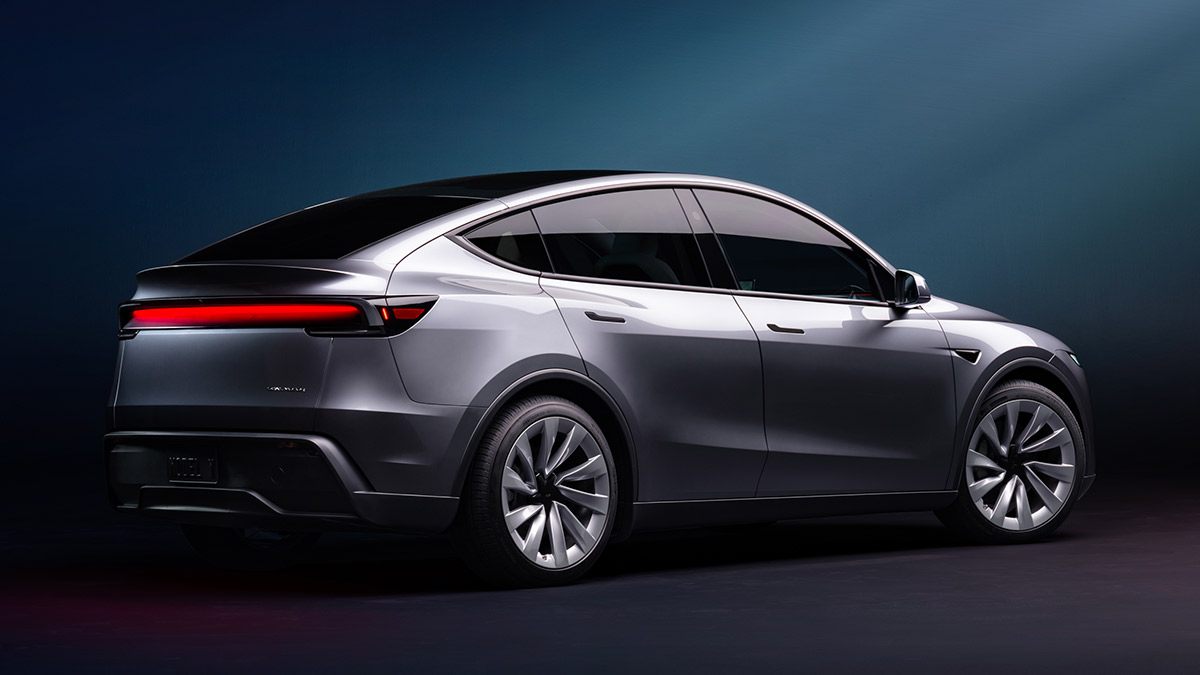
The Tesla Model Y is an excellent all-rounder but isn’t perfect, which opens the door for the Zeekr 7X and other newcomers.
How big is the Zeekr 7X compared to the Tesla Model Y?
The 2025 Zeekr 7X and Tesla Model Y are closely matched in terms of dimensions but there are key differences when drilling into the detail. The 7X is slightly shorter at 4787mm (-3mm) but wider at 1930mm (+10mm, excluding mirrors) and a little taller in overall height at 1650mm (+26mm). Ground clearance is 172mm in the 7X compared to 167mm in the Model Y.
Both cars have a similar wheelbase – 2900mm for the 7X compared to 2890mm for the Model Y – and in overall terms they occupy much the same space on the road and have generous interior room.
For example, the Tesla has 20mm more front headroom (1041mm vs 1021) but the 7X counters with 1187mm maximum rear legroom, making it roomier for longer-legged passengers compared to the Model Y (1029mm), depending on the front seat position.
In each case, these are comfortable environs, with plush, premium features on both the 7X and Model Y including power-adjustable and heated front and rear seats, front seat ventilation (missing on 7X RWD but found elsewhere), synthetic leather upholstery (upgrading to a genuine Nappa top layer on the 7X Performance), ambient lighting, a panoramic glass roof (without a sunshade on the Model Y) and climate-control air-conditioning (dual-zone on Model Y, triple-zone on 7X).
The minimum boot space in the Zeekr 7X is 539 litres (measured to the top of the back seat), expanding to 1978L with the manual-operated 60/40-split folding rear seats lowered. Tesla quotes 822 litres behind the second row (to the roof), increasing to 2022L with the power-folding triple-split (40/20/40) seats down. On these figures, the Model Y looks to have the edge.
The 7X also has 62L of storage available in the front trunk under the bonnet of the RWD model, which is well down on the Model Y’s 116L ‘frunk’. Neither has a spare wheel, relying instead on a puncture repair kit – another extra-cost item on the Tesla at $85.
Regardless of how they compare, both EVs offer boot and frunk space far in excess of the majority of their medium SUV rivals.
What technology features on the Zeekr 7X and Tesla Model Y?
Both the 2025 Zeekr 7X and Tesla Model Y are high-tech electric cars, but the 7X is clearly more user-friendly for prospective owners who are more accustomed to traditional vehicle layouts.
Whereas the Tesla has a 15.4-inch touchscreen that displays the vehicle’s speed and is the primary source for major functions – not just temperature and stereo controls but adjusting the mirrors, opening the glovebox or bonnet, selecting drive or reverse, and so on (thankfully, there’s still an indicator stalk) – the Zeekr has a raft of supporting switchgear and displays to go with its 16-inch central touchscreen. These include a 13-inch digital instrument cluster, lower centre console buttons, various steering wheel controls, two stalks behind the tiller and, on the Long Range RWD and Performance AWD, a 36.2-inch head-up display.
Intelligent cabin modes are found on both the 7X and Model Y, including pet and camping modes (adjusting the temperature accordingly) and a sentry mode for automatic video recording around the vehicle when parked.
The two rival EVs have dual wireless phone chargers and plenty of other connectivity options, but Tesla goes without Apple CarPlay and Android Auto, opting instead for its own proprietary software for phone mirroring and other functions such as navigation, music streaming and arcade games.
Both have over-the-air (OTA) software updates and connected services linked to in-house apps, where higher-level services are available with a subscription. Tesla’s “premium connectivity” adds features such as music streaming and live traffic and satellite view maps for $10 a month after a trial period (the length of this varies). Its standard connectivity package runs for eight years, while Zeekr’s standard service is included for five years.
The 2025 update for the Tesla Model Y has brought an 8.0-inch touchscreen to the rear seat area that allows passengers to stream video content or play video games (via wireless headphones). Unlike the Zeekr 7X, however, the Model Y still doesn’t offer Vehicle to Load (V2L) functionality that allows external appliances to be powered from the car.
The Zeekr 7X has a 10-speaker stereo on the RWD, upgrading to a 21-speaker audio system on Long Range and Performance models, while the Model Y RWD has a nine-speaker system and moves to a 15-speaker unit in the Long Range AWD.
More: What are over-the-air (OTA) updates and how they work in cars
How safe are the Zeekr 7X and Tesla Model Y?
The 2025 Zeekr 7X recently achieved a maximum five-star safety rating with European NCAP, which is closely aligned with ANCAP.
Based on the Performance AWD model but applicable to all variants, the 7X performed well in Euro NCAP testing and achieved relatively high marks across the four main areas of assessment: adult occupant protection (91%), child occupant protection (90%), vulnerable road user protection (78%) and Safety Assist (83%).
The Tesla Model Y has not been tested since this year’s widespread ‘Juniper’ upgrade, but under more lenient 2022 testing protocols the pre-update Model Y achieved a five-star rating from Euro NCAP with high protection ratings in individual categories – adult (97%), child (87%), vulnerable road users (82%), Safety Assist (98%). This is comparable to the Australian ANCAP results.
Both the ZX and Model Y are fitted standard with seven airbags – dual front, front side, front centre and curtain airbags – and a wide range of advanced driver assistance systems (ADAS), including autonomous emergency braking (car-to-car, vulnerable road user, junction assist and backover), lane assist features, speed assistance, adaptive cruise control and vehicle occupant monitoring.
The Model Y has high-level features with its Enhanced Autopilot package ($5100) – including automatic parking assistance, which the 7X offers as standard – and Full Self-Driving Capability ($10,100), the latter only just becoming ‘unlocked’ for use in Australia. Despite the name, FSD is not a fully autonomous system and still requires active driver supervision and intervention as required, however it’s the most advanced semi-autonomous driving technology available on our roads.
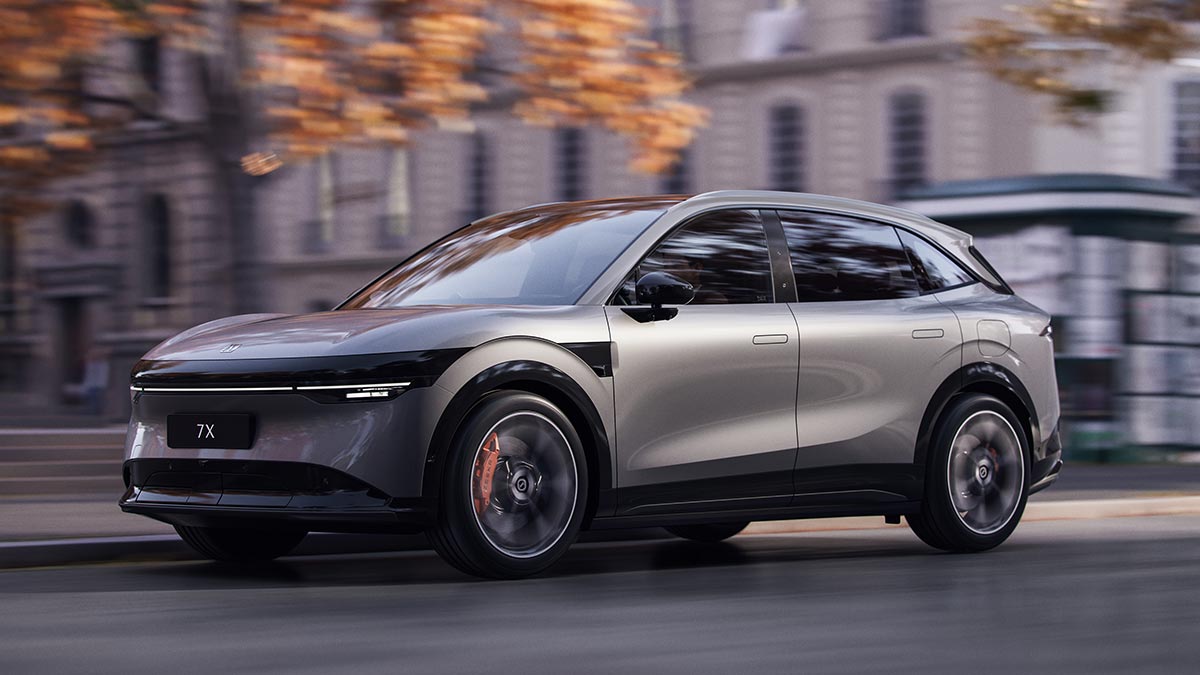
The Zeekr 7X is yet to prove itself on Australian roads, but on paper it looks to have most bases covered.
Should I buy a Zeekr 7X or Tesla Model Y?
The 2025 Zeekr 7X is certain to attract attention from would-be Tesla Model Y buyers and other prospective owners based on the specs comparison we’ve put together here and perhaps other more subjective factors such as its sleek Swedish-bred exterior design.
Zeekr might be an unknown quantity, but its Geely connections bring better-known brands using a version of the same SEA platform into view – Volvo, Polestar and Lotus among them – and the mechanical package carries a degree of sophistication, including active air suspension and continuous damper control found on the 7X Performance AWD model.
The 2025 upgrade for the Tesla Model Y has also overhauled its suspension and, combined with a raft of other updates, the American brand’s Chinese-built electric SUV remains a top pick in the medium SUV segment for EVs starting around $60,000.
It’s still a polariser, not least because of its unconventional cockpit, while other factors counting against the Model Y include Tesla’s undercooked warranty and some obvious equipment shortfalls.
As is often the case, the newcomer mounts a persuasive argument against the category leader but is yet to prove itself on Australian roads. If the Zeekr 7X delivers an all-round driving performance that’s as good as the Model Y, we might be staring at a new benchmark in this all-important class.
The information provided is general advice only. Before making any decisions please consider your own circumstances and the Product Disclosure Statement and Target Market Determinations. For copies, visit racv.com.au. As distributor, RACV Insurance Services Pty Ltd AFS Licence No. 230039 receives commission for each policy sold or renewed. Product(s) issued by Insurance Manufacturers of Australia Pty Ltd ABN 93 004 208 084 AFS Licence No. 227678.

